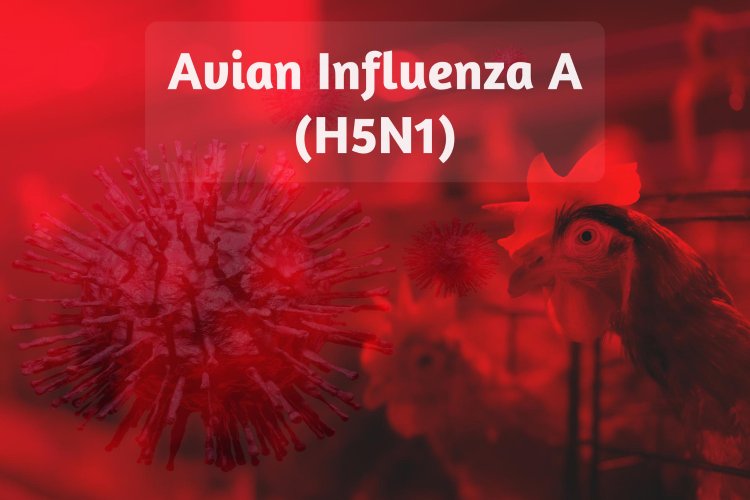H5N1 Influenza: Bridging the Gap Between Birds and Humans
In the realm of infectious diseases, few pathogens have captured the global spotlight quite like H5N1 influenza virus, commonly known as avian influenza or bird flu. Its reputation as a potent zoonotic agent capable of causing severe illness in both birds and humans has led to extensive research efforts aimed at deciphering its complex biology, transmission dynamics, and potential for pandemic spread. This article provides an in-depth exploration of H5N1, delving into its origins, molecular characteristics, transmission pathways, clinical manifestations, prevention strategies, and ongoing challenges in combating this formidable viral foe.

Origins and Evolution
H5N1 belongs to the Orthomyxoviridae family and is classified as an influenza A virus. It first emerged on the global stage in the late 1990s with outbreaks among poultry populations in Asia, particularly in countries like China, Vietnam, and Indonesia. Genetic analysis suggests that H5N1 likely originated from wild aquatic birds, particularly ducks and geese, which serve as natural reservoirs for influenza viruses. The virus has since undergone multiple genetic reassortment events, leading to the emergence of diverse genotypes with varying pathogenicity and antigenic properties.
Molecular Characteristics
At the molecular level, H5N1 possesses several distinctive features that contribute to its virulence and ability to infect a wide range of avian and mammalian hosts. The hemagglutinin (HA) protein, which mediates viral attachment and entry into host cells, exhibits a high binding affinity for α2,3-linked sialic acid receptors, which are abundant in avian respiratory tracts. This preference for avian receptors is a key determinant of H5N1's avian tropism. Additionally, the virus harbors mutations in other viral proteins, including neuraminidase (NA) and polymerase subunits, which may influence its replication efficiency, host range, and pathogenicity.
Transmission Dynamics
H5N1 primarily spreads among birds through direct contact with respiratory secretions, feces, and contaminated surfaces. Wild birds, particularly migratory waterfowl, play a crucial role in the long-distance dissemination of the virus across continents. In domestic poultry, the virus can cause devastating outbreaks characterized by high mortality rates and significant economic losses. While human infections with H5N1 are relatively rare, they occur primarily through close contact with infected birds or their environments. Limited instances of human-to-human transmission have been reported, typically within households or healthcare settings.
Clinical Manifestations
Human infections with H5N1 can result in a wide spectrum of clinical outcomes, ranging from mild respiratory illness to severe pneumonia and acute respiratory distress syndrome (ARDS). Fever, cough, sore throat, and muscle aches are common early symptoms, often progressing rapidly to respiratory failure and multi-organ dysfunction. The case fatality rate associated with H5N1 infection is alarmingly high, exceeding 50% in reported cases. Certain risk factors, such as age, underlying health conditions, and delayed initiation of antiviral therapy, may exacerbate disease severity and increase mortality risk.
Prevention and Control Strategies
Efforts to prevent and control H5N1 outbreaks encompass a broad range of strategies aimed at reducing viral transmission in both bird and human populations. In the poultry sector, measures such as enhanced biosecurity protocols, vaccination campaigns, and early detection and culling of infected flocks are critical for minimizing viral spread. Surveillance systems that monitor avian influenza activity in birds and humans enable timely detection of outbreaks and inform response efforts. In human healthcare settings, rapid diagnostic testing, appropriate infection control practices, and early administration of antiviral medications are essential for managing cases and limiting secondary transmission.
Ongoing Challenges and Future Directions
Despite significant progress in understanding and controlling H5N1, numerous challenges persist on both the veterinary and public health fronts. These include the continued circulation of the virus in bird populations, the potential for emergence of novel reassortant strains with pandemic potential, and the need for sustained investment in surveillance infrastructure and pandemic preparedness. Additionally, disparities in resources and healthcare infrastructure pose challenges for low- and middle-income countries in effectively detecting and responding to H5N1 outbreaks. Addressing these challenges will require continued collaboration and coordination among governments, international organizations, research institutions, and the private sector.
In conclusion, H5N1 remains a formidable threat to global health security, with the potential to cause devastating outbreaks in both bird and human populations. By deepening our understanding of the virus's biology, transmission dynamics, and clinical impact, we can develop more effective strategies for prevention, early detection, and control. However, sustained vigilance and investment in pandemic preparedness are essential to mitigate the ongoing risk posed by H5N1 and other emerging infectious diseases.
#Orthomyxoviridae #influenzaA #AsiaOutbreaks #wildbirds #geneticreassortment #hemagglutinin #avianreceptors #virulence #pathogenicity #mutations #birdspread #poultryoutbreaks #humaninfections #respiratoryillness #casefatalityrate #biosecurity #surveillance #antivirals #continuedcirculation #novelstrains #preparedness #globalhealth
Disclaimer:
The information provided in this article is for educational purposes only and should not be considered medical advice. If you have any health concerns or are experiencing symptoms, it is important to consult with a healthcare professional, such as a doctor or clinic, for proper diagnosis and treatment. Always seek the advice of your doctor or other qualified health provider with any questions you may have regarding a medical condition. Do not disregard professional medical advice or delay in seeking it because of something you have read in this article.
What's Your Reaction?





















